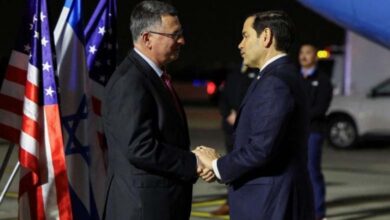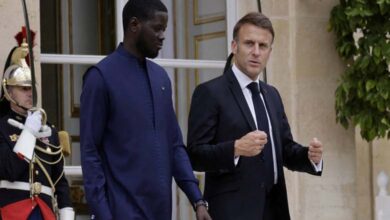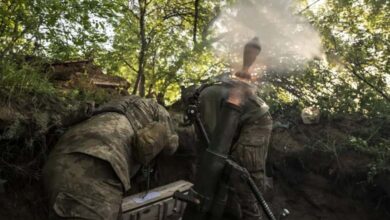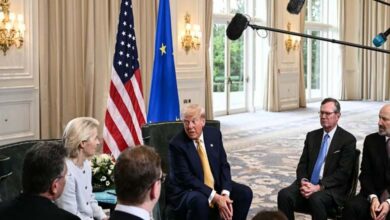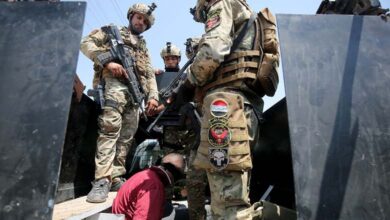Pekaks: The Mountain Hiding Iran’s Nuclear Bomb
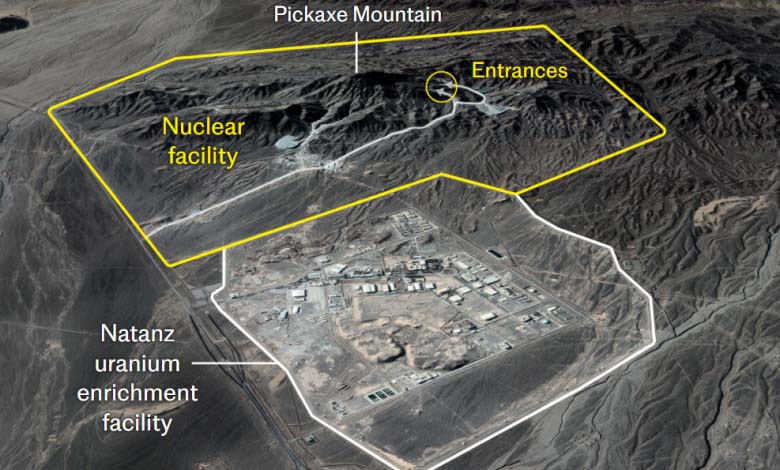
When IAEA Director General Rafael Grossi requested clarification from Iran about what’s happening beneath the Pekaks mountain, Tehran’s blunt and shocking reply was: “That’s none of your business.” This response came as U.S. B-2 stealth bombers were striking Iran’s key enrichment facilities in Fordow and Natanz with 30,000-pound bunker-busting bombs, in an attack President Donald Trump claimed had “wiped out Iran’s nuclear program.”
-
Trump Announces Ceasefire Between Israel and Iran
-
Iran’s Missile Arsenal: What Hasn’t Yet Been Used in the War with Israel
Pre-emptive Evacuation and a Mountain Plan B
According to the Telegraph, sixteen trucks were spotted outside Fordow ahead of the strike. An Iranian nuclear expert reported that the regime had moved large quantities of highly enriched uranium to a secret location before the bombing.
Sima Shine, a former Israeli security official, stated that Iran is likely concealing facilities housing hundreds or even thousands of advanced centrifuges capable of producing weapons-grade uranium.
-
Mutual escalation between Iran and Israel despite calls for de-escalation
-
Israel targets Isfahan nuclear site.. Iran confirms thwarting the attack
The newspaper reported that the Pekaks site — beneath Kuh-e Kolang Gaz La mountain, roughly 90 miles south of Fordow and near Natanz — could be this alternative secret site. Under construction, Pekaks has seen covert expansions and defensive reinforcements over the past four years.
Rising International Concern and Undeclared Materials
In April, Grossi confirmed the IAEA had requested details on the mountain site, but Iran’s stance remained unchanged.
-
One Week into War: Iran Expands Its Strikes on Israel with the Largest Rocket Barrage in 48 Hours
-
Hypersonic Missiles and Strikes on Nuclear Facilities: Day Six Between Iran and Israel
Grossi noted that the possibility of these tunnels being used to store undeclared nuclear materials “cannot be ruled out” and urged immediate inspector access to assess enriched uranium stockpiles.
French President Emmanuel Macron warned that the risk of Iran secretly enriching uranium had doubled amid a fragile truce with Israel, enforced by President Trump.
-
Israel Vows Retaliation as Iran Issues Threats — Red Lines Crossed and Strikes to Continue
-
Iran Reveals Nuclear Target Bank Inside Israel
Limited U.S. Strike and Nuclear Race Fears
A classified U.S. intelligence report revealed that the strike did not fully destroy the nuclear sites as Trump claimed. Only two were disabled, while underground structures remained intact, meaning Iran retains most of its nuclear material and could build a bomb within six months.
In response, the Iranian Parliament voted on Wednesday to suspend cooperation with the IAEA, deepening global concerns.
-
Iran Approves Largest Military Budget amid Tensions with Israel
-
Israeli Government Keeps Meeting Locations Secret for Fear of Iranian Retaliation
Pekaks: The New Mountain Fortress
Analysts suggest Iran may be ramping up enrichment at Pekaks — a heavily fortified underground facility.
Behnam Ben Taleblu of the Foundation for Defense of Democracies said the key question is whether Iran has already stockpiled fissile material at Pekaks or another hidden site.
-
“Surprise” in Israeli Attack on Iran: Advance Warning of Date and Targets?
-
How is Iran preparing to respond to Israel? An American newspaper reveals the details
Satellite images show recent expansion, supporting the theory that Pekaks is a replacement enrichment facility. Experts believe its size and depth may rival or exceed Fordow’s capabilities.
Pekaks reportedly has four tunnel entrances, compared to Fordow’s two, and may lie over 100 meters underground, versus Fordow’s 60–90 meters — making it harder for U.S. bunker-busters to penetrate.
-
No Ceasefire in Gaza until De-escalation between Iran and Israel
-
Details of Iran’s “Recruitment” of an Israeli and His Girlfriend to Carry Out an “Assassination” Operation
Bunker-Busters Ineffective Against Iranian Depths
Despite using GBU-57 bombs that can penetrate 60 meters of earth, Pekaks may be deeper than what conventional weapons can reach.
Security expert Reuel Marc Gerecht said the new facility was designed to give Iran a nuclear site nearly impossible to destroy, even with America’s most powerful bombs.
He added that new tunnels and a security belt complicate any potential commando or sabotage operation — as seen with previous Hezbollah targets.
-
In Case of an Israeli Attack: Source Discusses Iran’s Plan and Target Bank
-
Iran’s “Recruitment” of an Israeli Businessman to “Assassinate Netanyahu”: The Full Story
Iran’s Dispersal and Resilience Strategy
Fordow was built in secret and revealed in 2009 by Western intelligence, leading to heavy sanctions and becoming a central element of the 2015 nuclear deal, which turned the site into a research center.
Iran resumed enrichment at Fordow after the U.S. withdrew from the deal in 2018 and increased enrichment to 60% after the 2021 Natanz blast — near the 90% weapons-grade threshold.
-
Iran’s Secret Document Ignites a Dispute within the Israeli Military and Netanyahu’s Office
-
The Israeli Cabinet Ignites: What Is the Impact of the Iranian Annihilation Threat on Israel?
Intelligence reports suggest Iran is using a strategy of dispersing its nuclear capabilities across multiple sites to ensure continuity in case of attack.
The Institute for Science and International Security estimates Iran may deploy thousands of advanced centrifuges at Pekaks, allowing enrichment to continue even if known sites are destroyed.
Iranian Leadership: The Bomb Isn’t Off the Table
Ali Shamkhani, advisor to Supreme Leader Khamenei, stated that “the game isn’t over,” even if sites are destroyed, since materials, knowledge, and political will remain.
-
Leaks from the Secret Meeting: Iran Refuses to Support Hezbollah and its Iraqi Militias Against Israel
-
Intense Cyber War Between Israel and Iran
Deputy Foreign Minister Majid Takht-Ravanchi rejected calls to halt the nuclear program, stating: “No one can tell us what to do.”
Iran now appears set to activate the Pekaks facility soon, reinforcing its defenses. Observers warn that if the regime feels existentially threatened, Tehran may abandon its peaceful nuclear rhetoric and pursue weaponization.
Military Escalation and a Nuclear Arms Race
Over 12 days, Iran and Israel exchanged missile strikes until Trump ordered a historic attack on Iran’s nuclear infrastructure.
-
Washington Tests Military Capabilities Amid Escalation Between Israel and Iran
-
Iran Guards Its Commercial Ships in the Red Sea Amid Israeli Retaliation Concerns
Tehran responded with a missile strike on Al Udeid Air Base in Qatar — the largest U.S. base in the region and home to British RAF aircraft — prompting Gulf airspace closure.
Despite Trump’s ceasefire declaration, Israel bombed Iranian targets again. Furious, Trump called Netanyahu to demand adherence to the truce, later stating: “Iran and Israel don’t even know what they’re doing.”
Amid escalating tensions and a fragile ceasefire, Iran’s leadership may conclude that its regime faces an existential threat — paving the way for a real nuclear arms race.
-
Israel Caught Between Rafah and Iran.. Will it Break the Pressure Barrier?
-
Israel: If Iran Attacks Us, We Will Retaliate in Tehran
-
Iranian allies target Israeli interests in the Dead Sea
-
Iran’s Nuclear Program Back in the Spotlight… and Trump Seeks Political Breakthrough
-
Iran’s Nuclear Program: Tehran Awaits Trump’s Message via an “Arab Country”
-
“Iran’s Nuclear Program”: IAEA Condemnation and Tehran’s Response


